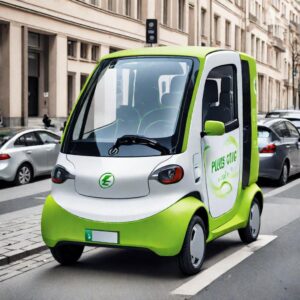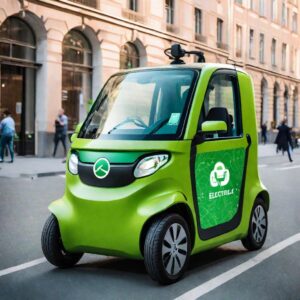The automotive industry is on the cusp of a transformative era, with electric vehicles (EVs) poised to become the mainstream mode of transportation. Over the next decade, several advancements and trends are set to redefine the landscape of EVs, offering a glimpse into a more sustainable and technologically advanced future. Let’s explore what we can expect in the realm of electric vehicles by 2034.
1. Technological Advancements in Battery Technology
One of the most significant challenges for electric vehicles has been battery technology. However, the next decade promises substantial improvements in this area:
- Increased Energy Density: Advances in battery chemistry, such as solid-state batteries, are expected to increase energy density, allowing for longer ranges on a single charge. This will address range anxiety, a common concern among potential EV buyers.
- Faster Charging: With the development of ultra-fast charging networks and improvements in battery design, charging times are set to decrease dramatically. Future EVs may be able to recharge to 80% in under 15 minutes.
- Cost Reduction: Economies of scale and technological breakthroughs are predicted to lower the cost of batteries, making electric vehicles more affordable for the average consumer.
2. Expansion of Charging Infrastructure
The growth of EVs is closely tied to the availability of charging infrastructure:
- Widespread Charging Stations: Governments and private companies are investing heavily in the expansion of charging networks. Expect to see charging stations become as ubiquitous as gas stations are today.
- Innovative Charging Solutions: Wireless charging, solar-powered chargers, and mobile charging units are on the horizon, providing more convenient and flexible options for EV owners.
- Smart Grids and Energy Management: Integration of EVs with smart grids will allow for more efficient energy management, enabling vehicles to act as mobile energy storage units that can feed electricity back into the grid during peak times.

3. Autonomous Driving and Connectivity
The next decade will likely see a convergence of electric and autonomous vehicle technologies:
- Self-Driving EVs: Autonomous electric vehicles are expected to become more prevalent, with major advancements in artificial intelligence and sensor technology. These self-driving EVs will enhance safety, reduce traffic congestion, and offer new mobility solutions such as robot-taxis.
- Connected Ecosystems: Future EVs will be part of a connected ecosystem, communicating with each other and infrastructure to optimize traffic flow and energy usage. This connectivity will also facilitate over-the-air updates, ensuring that vehicles remain up-to-date with the latest features and security enhancements.
4. Environmental and Economic Impact
Electric vehicles are set to play a crucial role in addressing environmental and economic challenges:
- Reduction in Greenhouse Gas Emissions: As more renewable energy sources power the grid, the environmental benefits of EVs will become even more pronounced. The shift to electric transportation will significantly reduce greenhouse gas emissions and air pollution.
- Economic Opportunities: The EV industry is creating new jobs in manufacturing, battery production, and charging infrastructure development. Additionally, reduced dependence on fossil fuels can enhance energy security and stabilize energy prices.
5. Policy and Incentives
Government policies and incentives will continue to drive the adoption of electric vehicles:
- Regulatory Support: Many countries are setting ambitious targets for phasing out internal combustion engine vehicles, with some aiming for complete bans on new gasoline and diesel car sales by 2030 or 2035.
- Financial Incentives: Tax credits, rebates, and subsidies for EV purchases, as well as incentives for installing home charging stations, will remain important tools for encouraging adoption.
- Urban Planning: Cities are increasingly designing infrastructure to support electric mobility, including dedicated lanes for electric buses and the integration of EVs into public transportation networks.
6. Diversity of Electric Vehicles
The variety of electric vehicles available to consumers will expand:
- Electric Trucks and Buses: The electrification of commercial vehicles, including trucks and buses, will gain momentum. These vehicles will benefit from advancements in battery technology, providing greater range and efficiency for long-haul and public transportation.
- Affordable EV Models: As production costs decrease, a wider range of affordable EV models will enter the market, making electric transportation accessible to more people.
- Luxury and Performance EVs: High-performance electric sports cars and luxury EVs will continue to push the boundaries of design and technology, appealing to a segment of consumers seeking premium experiences.
Conclusion
The future of electric vehicles is bright and full of promise. Over the next decade, advancements in technology, infrastructure, and policy will converge to make electric vehicles a central component of our transportation ecosystem. This transformation will not only benefit the environment but also drive economic growth and improve the quality of life for people around the world. As we look ahead to 2034, it’s clear that the road ahead is electric.
